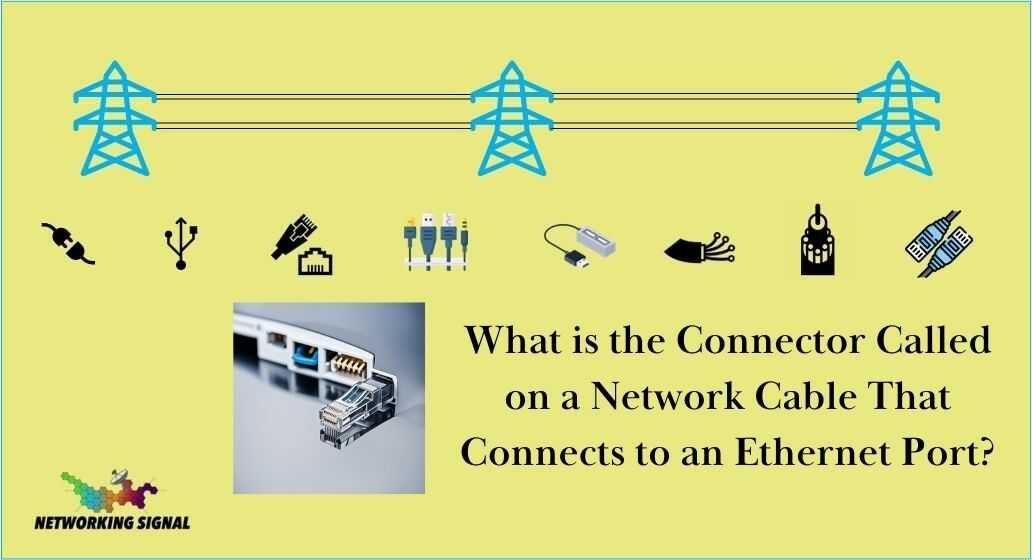When setting up a wired home or office network, you’ll likely encounter Ethernet ports and cables with those familiar plastic connectors on the ends. But what exactly are these connectors called and why are they so common for networking equipment?
Let’s unravel the mystery behind the cables that power our connected world which forms the backbone of communication in the modern tech-driven business environment as well as our personal lives.
What Kind of Connector Fits into an Ethernet Port?
The most common type of connector used for Ethernet ports and network cables is an 8P8C modular connector, also known as an RJ45 connector. This is a plastic connector that has 8 positions and 8 contacts.
The RJ45 connector locks into place when inserted into an Ethernet port, providing a secure wired connection. Both the Ethernet port and the network cable will have a matching RJ45 connector, allowing them to be joined together.
Read More About
Introducing the RJ45 Connector
The type of connector that plugs into nearly every Ethernet port is known as an “RJ45” connector. RJ45 connectors are rectangular plastic plugs about 1 inch long, featuring 8 positions that line up with copper contacts inside. These connectors are very commonly used in layer 1 physical network connections using Cat 5, Cat 6, and Cat 7 Ethernet cables.
You’ve probably seen these on the ends of Ethernet cables, both male connectors that plug into ports and female ports built into networking hardware. The RJ45 is like the USB of the networking world – it’s the standard that ensures cables and ports mate properly for effective communication between devices.
Fun fact: RJ stands for “registered jack,” referring to the standardized wiring scheme the connectors follow. The 45 refers to this particular style and its 8-contact design which is capable of delivering high speeds.
Why Is the RJ45 Connector So Common?
This clever little connector provides a few key advantages that have made it ubiquitous for Ethernet networks over the past few decades:
- Simplicity: With its click-and-lock design, no tools are required to plug into network ports. Simple to install on cables too without any special crimping tools.
- Speed: Supports fast Ethernet data rates up to 1 Gigabit per second on Cat 5e/Cat 6 cables.
- Compatibility: Works seamlessly across all standard Ethernet ports guaranteeing interoperability.
- Reliability: Provides a stable connection that stands up to frequent unplugging/replugging making it suitable for flexible workspaces.
For these reasons, RJ45 has become the default connector for any device or cable designed for Ethernet networking right from large corporate networks to home networking. It offers the perfect balance of ease of use, performance, and durability.
What Happens Inside an RJ45 Connection?
When you plug an RJ45 cable into a matching port, the connector completes an electrical pathway for network data to flow between devices. Inside the connector, eight gold-plated metal contacts touch corresponding pins that lead to the copper wires in the cable. The connectors are usually made of flexible plastic and can withstand a fair amount of wear and tear.
This connection allows pulses of electrical signals to transmit 1’s and 0’s across the cable, encoding the digital data that networks rely on. The wiring standard ensures the cable’s colored wires correctly match up with each pin position in the connector.
So while it may seem simple from the outside, the RJ45 connector enables some complex data communication magic through that satisfying click when making an Ethernet connection which forms the physical layer enabling communication between devices.
RJ45 Wiring Standards
| Pin | Wire Color |
|---|---|
| 1 | White/Orange |
| 2 | Orange |
| 3 | White/Green |
| 4 | Blue |
| 5 | White/Blue |
| 6 | Green |
| 7 | White/Brown |
| 8 | Brown |
RJ45 Connectors Power the Wired World
That ubiquitous little plastic plug has an important behind-the-scenes role in keeping our networks humming. Whether connecting PCs to the internet or servers to switches, the RJ45 connector helps maintain vital physical links across Ethernet cables. And that wired foundation supports our modern world of wireless signals floating everywhere by connecting the wireless access points.
So the next time you plug in a network cable, take a moment to appreciate just how crucial that standard RJ45 connector is in linking devices across Ethernet’s wires. Where would our hyperconnected society be without it?
The RJ45 has stood the test of time and continues to be relevant even when wireless technologies have advanced significantly.

